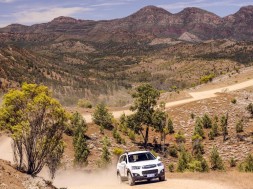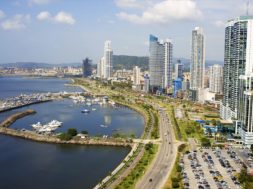The Flinders Ranges are one of South Australia’s most popular outback tour destinations, and are world-renowned for their rugged mountain landscapes, spectacular gorges, sheltered sandy creeks lined with majestic River Red Gums, and their abundant flora and fauna. An authentic Australia outback destination, the Flinders Ranges are nevertheless easily accessible from the South Australian capital of Adelaide.
The Flinders Ranges are a perfect location in which to witness and marvel at nature on a grand scale. Home to magnificent, rugged and uncompromising landscapes, they are truly a destination where you can get away from it all. Though they seem a million miles from the hustle and bustle of city life, the southern areas of the ranges begin only 220 kilometres from Adelaide. Wilpena Pound is around 450 kilometres (five hours drive) from Adelaide. Many different routes are available to explore the Flinders ranges, and all offer excellent scenery. To fully appreciate the area, a few days at least are necessary. For those without transport there are several tours operating from Adelaide.
The Flinders Ranges National Park is situated between the outback South Australian towns of Hawker and Blinman. Covering over 950 square kilometres, the park is about 450 kilometres north of Adelaide and offers a broad range of outdoor activities for all ages and tastes including camping, bushwalking, scenic touring, photography, birdwatching and Aboriginal and European tour activities exploring the history and cultures of the region.
The Flinders Ranges join the Gulf of St Vincent to the South Australian outback. The landscape of the region is truly spectacular, particularly in spring when wildflowers are blooming and carpet the countryside. Bush walking is a popular and rewarding activity in the ranges, including walks around the Arkaroola Mt Painter Wildlife Sanctuary, the Heysen Trail, Mt Remarkable National Park and Wilpena Pound.
The indigenous Adnyamathanha people have lived in the region for many tens of thousands of years, and the ranges remain of enormous cultural significance to them. Adnyamathanha (hills or rock people) is a term now used to describe the Pangkala, Pilatapa, Yadliaura, Kuyani and Wailpi peoples, the traditional indigenous owners of the Flinders Ranges. These groups share a common identity based on the Yura Muda, the culture and language of their ancestors. While European geologists explain the formation of the Flinders Ranges in scientific terms, the Adnyamathanha understand the landscape through the Yura Muda dreamtime stories, which invest the physical landscape with spiritual significance.
The Flinders Ranges are full of sites testifying to the rich cultural heritage of the Adnyamathanha people, including cave paintings, stone arrangements, graves and ochre quarries. Cave paintings and rock engravings can be viewed at Sacred Canyon and Arkaroo Rock in the Flinders Ranges National Park. The Adnyamathanha people ask that visitors respect their culture by refraining from touching, damaging or removing items at these sites.
European settlers moved into the Flinders Ranges in the 1840s, changing the traditional lifestyle of Adnyamathanha people forever. Many continue to live and work in the area today, with the towns of Nepabunna, Leigh Creek and Port Augusta being their main centres. Family and employment responsibilities enable the Adnyamathanha to maintain links with their traditional country. Some work in rural enterprises such as cattle stations while others work in tourism and as park staff. To learn more about Admyamathanha culture, enquire at the Wilpena Visitor Centre and other information centres about local Adnyamathanha cultural tour operators.
The Flinders Ranges appear are mentioned in the journals and diaries of many Australian explorers. Matthew Flinders explored the upper reaches of Spencer Gulf in 1802. Sturt and Eyre traversed the area during their journeys north in search of an inland sea. Pastoral runs were established at Arkaba, Wilpena, Aroona and Oraparinna from 1851. By 1863, European settlement extended far beyond the ranges, and copper mining was booming in the region. No rain fell in the area from 1864 to 1866, when the saltbush plains were stripped bare and huge losses among both stock and native fauna occurred. Many pastoral runs were deserted and mining virtually ceased. The deserted runs were gradually reoccupied and stocking rates reduced. Today, the pastoral industry remains viable with greatly improved practices and sustainable stocking rates.





